A journey through time, uncovering when biblical sacrifices ceased, awaits—discover the transformation of ancient worship practices.
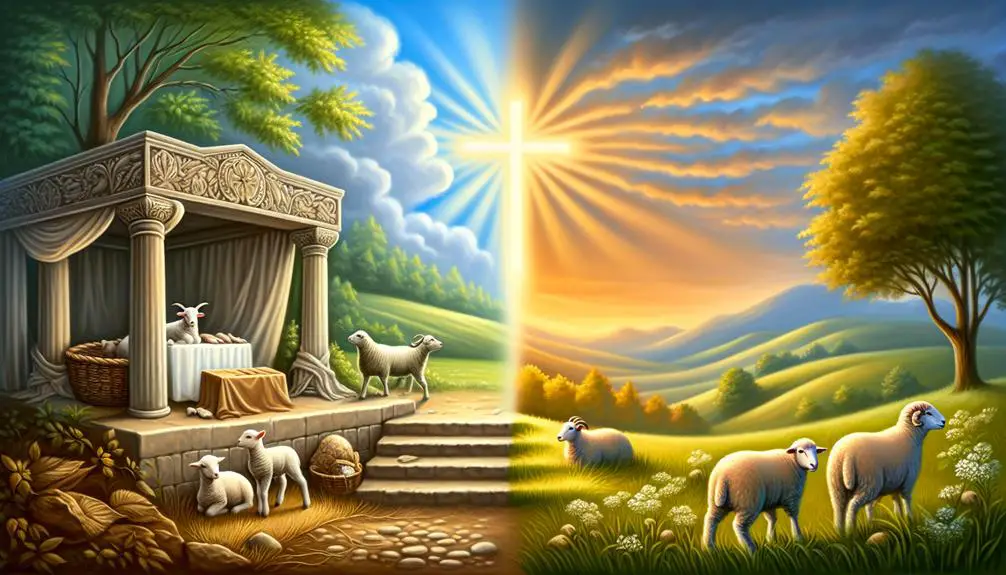
When Did Sacrifices Stop in the Bible
As you picture ancient altars stained with the blood of countless offerings, a pivotal question arises: when did these sacrificial practices cease in the Biblical narrative?
The transition from Old to New Testament marks a profound shift in worship, one deeply intertwined with the significance of Jesus' ultimate sacrifice. The destruction of the Second Temple further complicates the story, alongside the early Christian practices that emerged post-Jesus.
Unraveling this historical and theological tapestry not only sheds light on the past but also invites you to ponder the implications of such a change for faith today. Why does this evolution matter? Let's explore.
Key Takeaways
- Sacrifices ceased with Jesus' death, fulfilling ancient prophecies and marking a shift to spiritual atonement.
- The New Testament introduced heart-centric worship, reducing emphasis on physical sacrifices.
- Early Christians redefined worship, focusing on prayer and communal practices over traditional sacrifices.
- The destruction of the Temple in 70 AD ended Jewish ritual sacrifices, prompting a shift towards Torah study and ethical living.
The Role of Sacrifices in Worship
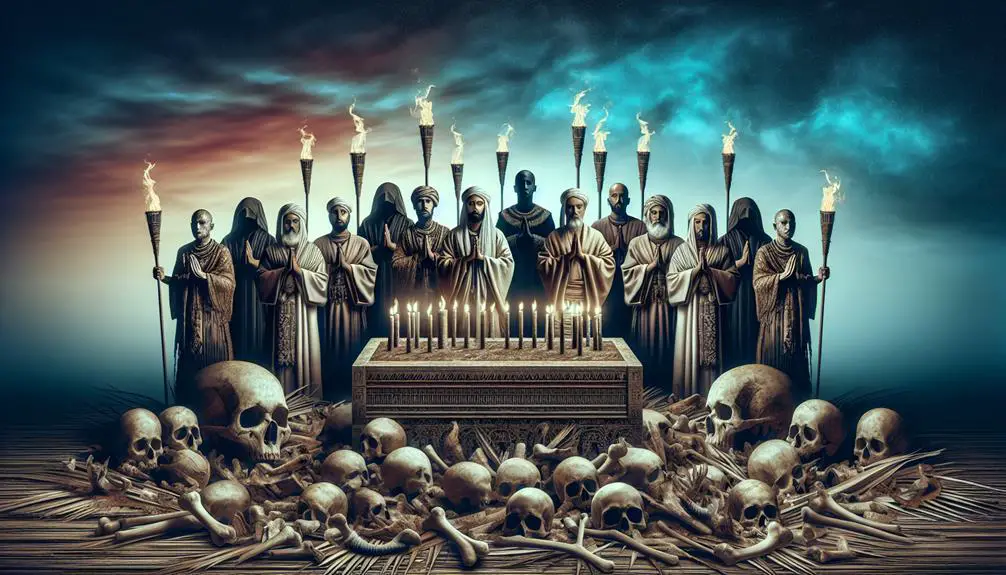
In biblical contexts, sacrifices served as a pivotal means for worshippers to express atonement, gratitude, and devotion to God. These practices, deeply embedded in the fabric of ancient religious life, weren't mere formalities but held profound ritual significance. Animal offerings, in particular, stood at the heart of this sacrificial system. You'll find that the act of presenting livestock—ranging from bulls and goats to sheep and doves—was laden with symbolic meanings, each species and the condition of the animal reflecting different facets of the worshipper's intent and spiritual state.
Analyzing the ritual significance of these offerings, it's clear they were multifaceted. Atonement, one of the primary purposes, involved the transfer of the worshipper's sins onto the animal, which was then sacrificed, symbolically cleansing the individual of their transgressions. This act of substitution underscored the gravity of sin and the mercy of divine forgiveness. Moreover, animal sacrifices also served as expressions of gratitude, where the offering signified thanksgiving for God's provision and blessings. The ritual, in this context, facilitated a tangible means of acknowledging God's benevolence and sustaining grace.
Devotion, another critical aspect, was manifested through the voluntary nature of certain offerings, reflecting the worshipper's commitment and loyalty to God. These acts of worship weren't merely transactional but were imbued with deep spiritual significance, reinforcing the bond between the divine and the devout.
Understanding the role of sacrifices in worship thus requires appreciating these layers of meaning. Animal offerings weren't arbitrary but were carefully chosen expressions of human-divine relationships, embodying atonement, gratitude, and devotion within the ritual practices of biblical times.
Transition From Old to New Testament
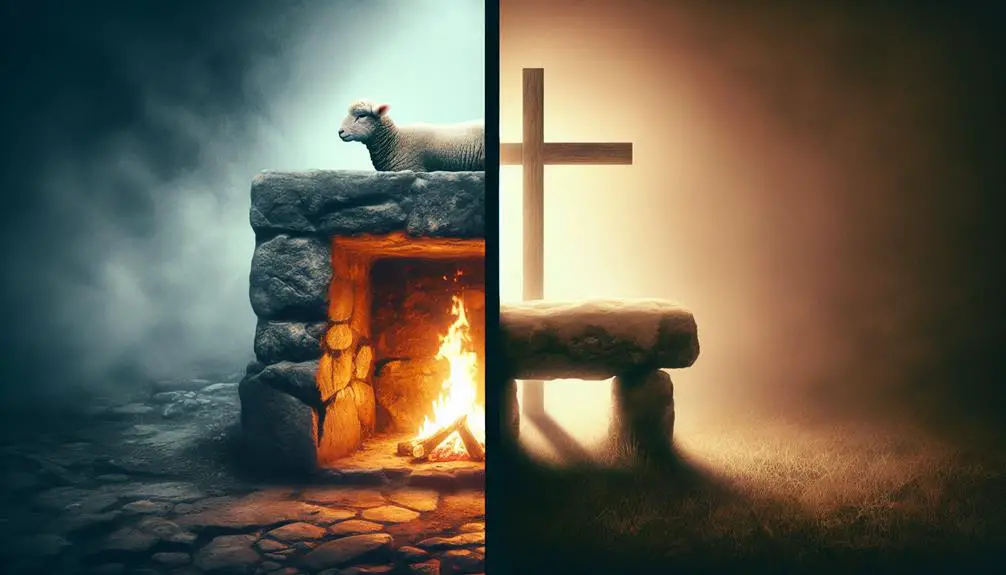
The transition from the Old to the New Testament marks a pivotal shift in religious practices, notably moving from the ritualistic animal sacrifices to the symbolic act of communion. This evolution reflects not just a change in rituals but also a deepening understanding of covenant continuity between God and His people. Testament comparisons reveal significant insights into how practices and perceptions of divine worship transformed.
- Covenant Continuity: Despite the outward change in worship practices, the underlying principle of a covenant relationship with God remains unaltered. This continuity underscores God's unchanging nature and His steadfast commitment to His people.
- Testament Comparisons: A close examination of the Old and New Testaments reveals a progression from physical to spiritual in the approach to atonement and reconciliation with God. The physical sacrifices of lambs, bulls, and goats in the Old Testament prefigure the spiritual sacrifice of Christ in the New.
- Shift in Worship Practices: The transition signifies a move from external expressions of faith to internalized, heart-centric worship. This shift encourages believers to cultivate a personal, introspective relationship with God, emphasizing moral and ethical living as acts of worship.
Analyzing this transition, you'll notice that it doesn't negate the Old Testament's relevance; rather, it fulfills and transcends it. The New Testament introduces a more profound understanding of salvation and worship, rooted in love and personal commitment rather than fear and obligation. This evolution in practice and understanding illuminates the path from ritual to relationship, guiding believers in their spiritual journey.
The Significance of Jesus' Sacrifice
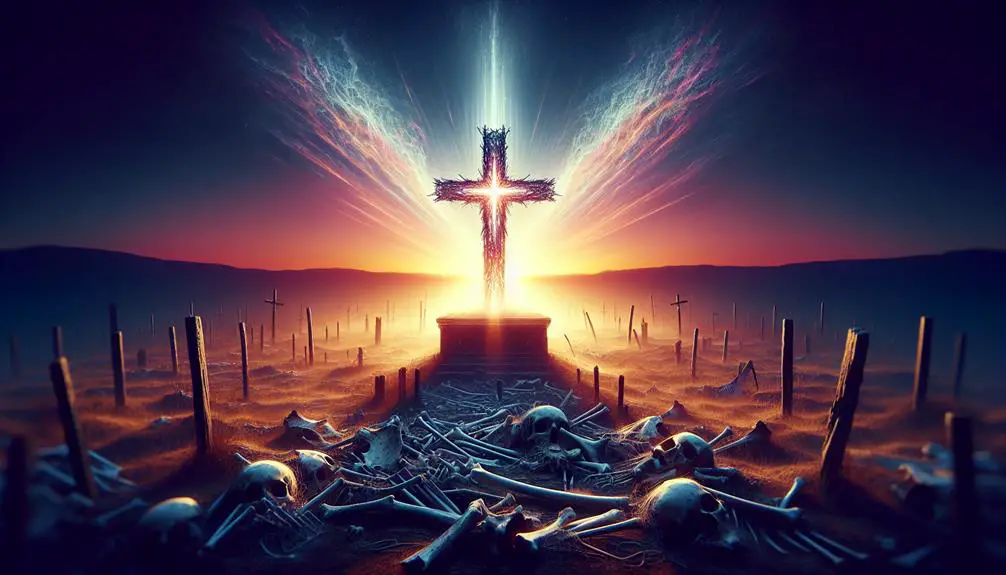
You'll find that Jesus' sacrifice marks a critical pivot from the Old to the New Testament, serving as the fulfillment of long-standing prophecies.
This act not only introduced a new method for sin atonement, distinct from the ritualistic animal sacrifices of the past, but also laid the groundwork for the New Covenant between God and humanity.
Through this lens, the theological and historical significance of Jesus' sacrifice becomes a central point of analysis.
Fulfillment of Prophecy
Jesus' sacrifice stands as a pivotal fulfillment of ancient prophecies, marking a significant shift in the biblical narrative from ritual sacrifices to spiritual redemption. Modern interpretations have shed light on the profound prophetic accuracy of these events, underscoring their importance in the broader theological context.
- Prophetic Accuracy: The precision with which Jesus' life and sacrifice align with Old Testament prophecies is remarkable, supporting claims of divine orchestration.
- Shift in Redemption Paradigm: His death symbolizes the transition from physical to spiritual atonement, altering the fabric of religious practice.
- Modern Interpretations: Scholars and theologians continuously explore the depth of this fulfillment, contributing to a richer understanding of biblical prophecy.
This analytical perspective illuminates the complexity and significance of Jesus' role in fulfilling divine prophecy, central to Christian doctrine.
Sin Atonement Method
With the crucifixion of Christ, a transformative shift occurred in the method of sin atonement, moving from the physical sacrifices of the Old Testament to a singular, spiritual act of redemption. This transition holds profound ethical implications, signaling a departure from ritualistic offerings to an emphasis on internal transformation and moral accountability.
Jesus' sacrifice, perceived as the ultimate atonement for sin, invites you to reflect on the essence of forgiveness and reconciliation, not through external acts but through heartfelt repentance and ethical living. Modern parallels can be drawn in how individuals seek moral guidance, not in ritual, but in the principles Jesus embodied.
This shift underscores a universal quest for redemption, emphasizing personal integrity and ethical conduct as the bedrock of spiritual fulfillment.
New Covenant Foundation
Building on the shift from Old Testament sacrifices to Christ's ultimate act of redemption, it's imperative to explore the foundational role of Jesus' sacrifice in establishing the New Covenant. His death and resurrection serve as the cornerstone for a new era in religious practice and belief, fundamentally altering the landscape of spiritual covenant and atonement.
- Gentile Inclusion: Jesus' sacrifice broke down the barriers between Jew and Gentile, offering salvation to all humanity, irrespective of ethnic background.
- Covenant Permanence: Unlike the old covenants, which were subject to renewal and could be broken, Jesus' sacrifice established a permanent covenant, unbreakable and eternal.
- Holistic Redemption: It wasn't just about atonement for sins; it was a restoration of the relationship between God and humanity, offering a path to spiritual renewal and eternal life.
The Destruction of the Second Temple
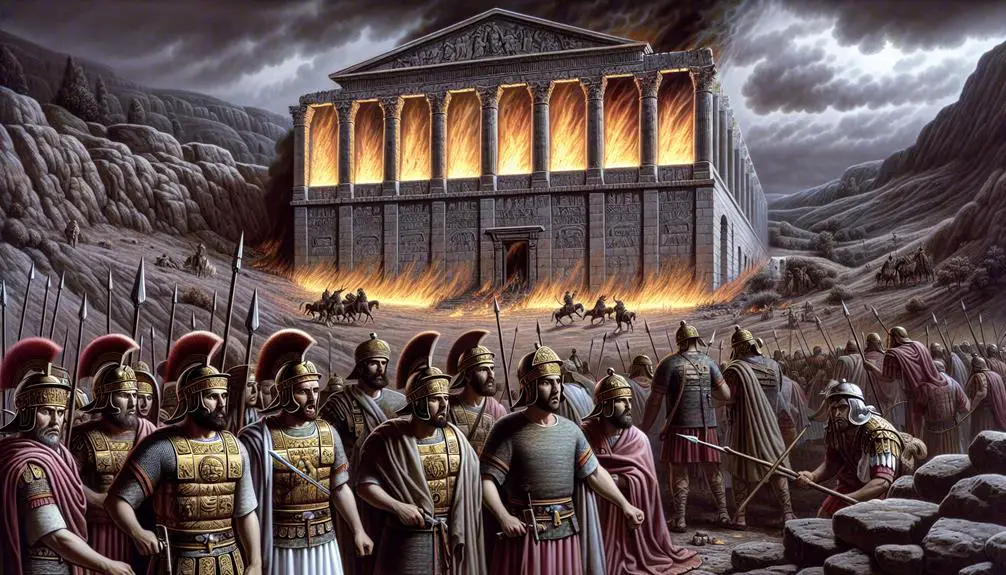
The destruction of the Second Temple in 70 CE marked a pivotal moment in Jewish history, fundamentally altering the practice of sacrifices within the faith. Under Roman occupation, the Second Temple not only served as a religious epicenter but also as a symbol of Jewish autonomy and identity. Its grandeur, amplified by significant architectural innovations, underscored its importance. The Romans, aware of its significance, targeted the Temple during the First Jewish–Roman War, leading to its eventual downfall.
This catastrophic event didn't merely result in the loss of a monumental structure; it severed the physical location where sacrifices, central to Jewish worship and ritual purity, were performed. With the Temple's destruction, Jews found themselves in a theological conundrum. The very act of sacrifice, pivotal for atonement and communion with God, became impossible to carry out in the prescribed manner.
In response, the faith underwent a profound transformation. Rabbinic Judaism emerged, prioritizing Torah study, prayer, and ethical living as substitutes for the sacrificial rites. This shift represented a significant theological adaptation, ensuring the survival and continuity of Jewish religious life despite the absence of the Temple.
The Temple's destruction by the Romans wasn't merely an act of war; it was a catalyst for one of the most significant theological shifts in Jewish history. It underscored the resilience of faith in the face of adversity and the capacity for profound religious evolution when confronted with the impossible.
Early Christian Practices Post-Jesus
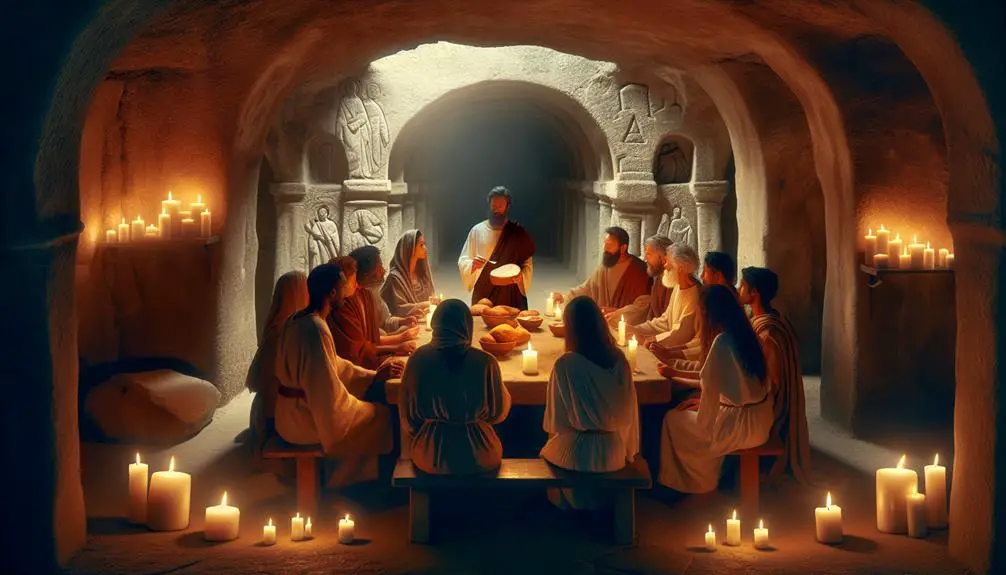
You'll observe that after Jesus's death, early Christians significantly redefined worship practices, moving towards communal gatherings that emphasized spiritual rather than physical sacrifices. The evolution of communal worship marks a pivotal shift, highlighting a transition from Temple-based sacrifices to more metaphorical offerings, a concept deeply rooted in the teachings of Jesus.
Furthermore, the inception and spread of the Eucharist underscore its profound symbolic significance, intertwining remembrance, community, and the new covenant theology in a single ritual act.
Communal Worship Evolution
After Jesus' crucifixion, early Christian practices underwent a profound transformation, notably in the realm of communal worship, moving away from traditional Jewish customs towards gatherings that emphasized prayer, scripture reading, and the Eucharist. This shift had a deep impact on the ritual significance and worship diversity among the early Christian communities.
- Prayer meetings became central, focusing on direct communication with God, reflecting a more personal and communal spirituality.
- Scripture reading involved the shared reflection on the teachings of Jesus and the Hebrew Scriptures, fostering a collective understanding and interpretation.
- Eucharist gatherings underscored the communal aspect of worship, though the specifics of its observance varied, highlighting the diversity within early Christian practices.
This evolution signified a distinct move towards a faith community centered on shared beliefs and practices, distinct from its Jewish roots.
Eucharist Origins and Meaning
Exploring the origins and meaning of the Eucharist reveals how early Christian communities redefined communal worship by integrating a ceremony deeply rooted in the teachings of Jesus. This transition marked a significant evolution from traditional Jewish practices to a ritual embodying the new covenant through Christ's sacrifice.
Central to its theological foundation, transubstitution debates emerged, focusing on the nature of Christ's presence in the bread and wine. These discussions underscored the profound spiritual implications of the Eucharist, transforming mere symbols into manifestations of divine grace.
Additionally, liturgical variations developed, reflecting the diverse interpretations and practices within the early Church. These adaptations demonstrated the dynamic nature of Christian worship, as communities sought to maintain fidelity to apostolic traditions while accommodating cultural and regional differences.
Theological Implications of the Change
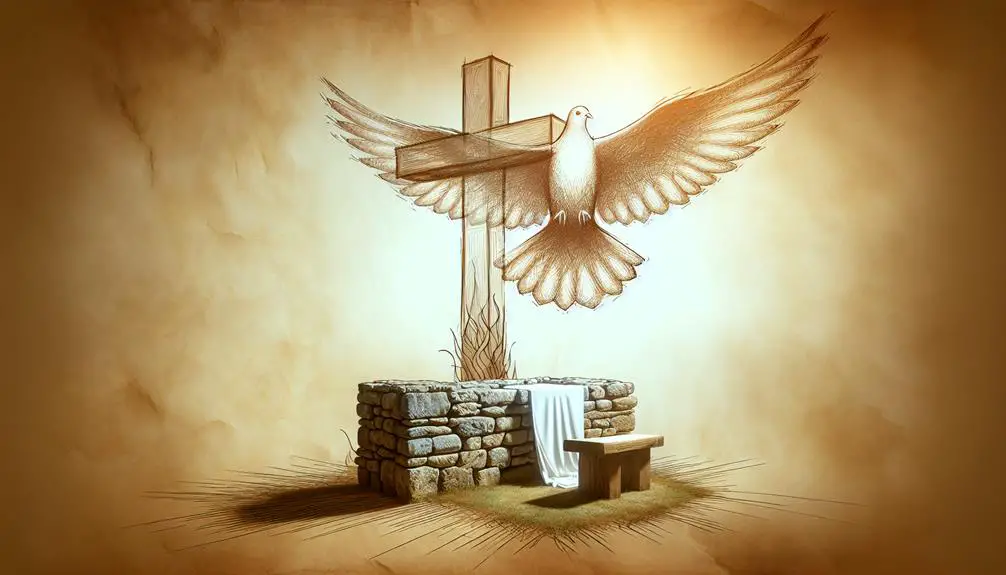
The cessation of sacrificial practices in biblical history marks a profound shift in theological understanding, directly impacting how believers perceive their relationship with the divine. This pivotal moment not only redefined divine relationships but also ushered in significant ethical transformations within the faith community.
- Divine Relationships: Previously, sacrifices were seen as a necessary conduit for maintaining a favorable relationship with God. Their discontinuation suggests a transition towards a more personal, introspective form of devotion, emphasizing prayer, moral conduct, and the internalization of religious principles over external rituals.
- Ethical Transformations: The move away from physical sacrifices underscored a shift towards ethical living as the primary expression of one's faith. This reorientation highlights the importance of actions and intentions in the eyes of the divine, rather than the ritualistic offering of sacrifices.
- Community Dynamics: The change affected not only individual believers but also the communal practice of religion. It fostered a sense of unity and shared responsibility among members to uphold ethical standards and support each other's spiritual growth.
This evolution in practice and thought reflects a deeper understanding of what it means to live a life of faith. It challenges believers to engage with their spirituality on a more personal level, considering not just their actions but the intentions behind them. The theological implications of this shift are profound, inviting a reexamination of foundational beliefs and encouraging a more introspective, ethical approach to religious life.
Frequently Asked Questions
How Did Different Cultures Outside of the Biblical Context View and Practice Sacrifices, and Did They Influence Biblical Practices?
You're exploring how various cultures practiced sacrifices and their potential influence on biblical traditions.
Aztec ceremonies often involved human offerings to appease gods, contrasting with Greek rituals that typically featured animal sacrifices for divine favor.
These practices underscore a diverse historical context of sacrificial customs.
While direct influences on biblical rites are debated, the widespread nature of sacrifices across cultures highlights shared human attempts to connect with the divine.
Were There Any Notable Figures Within the Bible Who Opposed or Criticized the Practice of Sacrifices Before It Ceased?
Interestingly, you'll find that within the Bible itself, there were voices that critically assessed the practice of sacrifices. These prophetic criticisms often came from notable figures who saw sacrificial symbolism as evolving beyond literal offerings.
Analyzing their perspectives, it's clear they advocated for a deeper spiritual connection rather than physical acts. Their critiques aimed at redirecting focus from ritualistic practices to a more heartfelt and genuine faith expression.
How Did the Cessation of Sacrifices Impact the Daily Lives and Spiritual Practices of the Average Believer at the Time?
When sacrifices ceased, you'd have noticed significant shifts in your daily life and spiritual practices. The economic implications were immediate; you no longer needed to allocate resources for sacrifices, affecting local trade and markets.
Community dynamics shifted as well, moving from a practice that physically centered around a temple or altar to more personal, introspective forms of worship. This transition likely prompted you to rethink your approach to spirituality and community engagement.
Are There Any Modern Religions or Sects That Trace Their Origins Back to Biblical Times That Still Practice Some Form of Sacrifice?
You're exploring if modern religions with roots in biblical times still practice sacrifice.
While direct animal sacrifices are rare due to modern interpretations and ethical considerations, symbolic forms persist.
For instance, some Christian denominations observe Communion, recalling Jesus' sacrifice, and certain Jewish sects perform the Kaparot ritual symbolically transferring sins to a chicken before Yom Kippur.
These practices reflect a nuanced understanding of ancient traditions within contemporary ethical frameworks.
How Do Contemporary Scholars Reconcile the Archaeological Evidence of Ancient Sacrifices With the Biblical Narratives?
You're navigating a historical maze, where ancient sacrifices and biblical stories intertwine. Contemporary scholars use dating methodologies, like radiocarbon dating, to pinpoint when these practices occurred.
They dive deep into ritual symbolism, analyzing artifacts and texts to understand the significance behind these age-old offerings. Their analytical approach sheds light on how these ancient customs align or diverge from biblical narratives, offering a detailed, scholarly perspective on a complex religious past.
Conclusion
In conclusion, the cessation of sacrificial practices marked a pivotal shift in religious observance from the Old to the New Testament, primarily catalyzed by Jesus' ultimate sacrifice.
Interestingly, by the time of the Second Temple's destruction in 70 AD, it's estimated that thousands of sacrifices ceased almost overnight—a testament to the profound transformation within the faith.
This change underscores the theological evolution from ritualistic sacrifices to a focus on spiritual worship, fundamentally altering the Christian and Jewish religious landscapes.

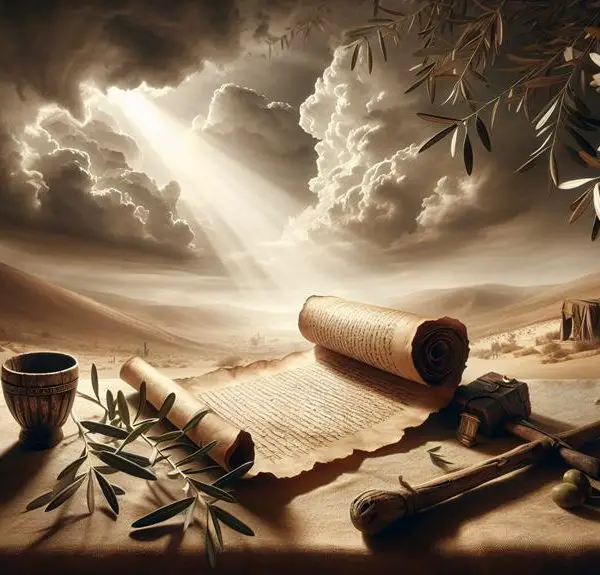
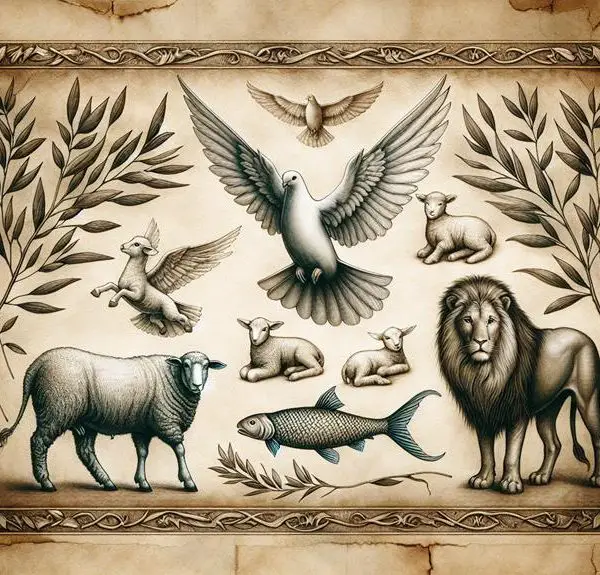
Sign up